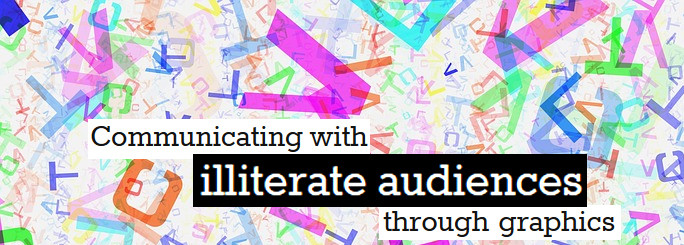- Digital Marketing for Illiterate Audiences: How to Sell Without Text (Photos, Emojis, Audio)
- Why You Need to Market Differently to ‘Illiterate’ Audiences
- How to Market Without Text: Key Strategies
- Practical Examples for Inspired Marketing
- Bonus: Related Digital Markeing Blog Articles;
- Why This Approach Works in Nigeria and Other Places
- Tips for Success in Digital Marketing for ‘Illiterate’ Audiences
- Conclusion
Digital Marketing for Illiterate Audiences: How to Sell Without Text (Photos, Emojis, Audio)
Many businesses and marketers face a challenge when trying to reach audiences that cannot read or write fluently. These audiences are often found in rural areas, among older populations, or in communities where literacy levels are low. Traditional text-based marketing tools may not work well for them. So, how can you sell effectively to these audiences? The answer is to use visual and audio methods like photos, emojis, and sound.
In this article, we will explore how to do digital marketing for ‘illiterate’ audiences and how to sell without text. We will cover simple and practical ways to reach these communities and grow your business.
Why You Need to Market Differently to ‘Illiterate’ Audiences
Most marketing strategies rely on written content. Whether it is social media posts, websites, or emails, text plays a big role. But for audiences with low literacy, these methods may not be effective. They may see your ads but not understand them.
This is why you need to adapt your approach. When you use pictures, emojis, and audio, you make your message accessible to more people. This opens your business to new customers who were previously unreachable through traditional digital marketing.
How to Market Without Text: Key Strategies
Here are some simple and effective ways to promote your products or services to ‘illiterate’ audiences using visual and audio tools.
1. Use Clear and Colorful Photos
Pictures are powerful tools that communicate messages instantly. Use high-quality, colorful photos that show your product or service clearly. For example, if you sell food, show pictures of the food on a plate. If you offer a service like plumbing, show images of the work done.
Ensure your photos are simple and focus on one main message. Avoid cluttered images that confuse viewers. When the audience sees familiar objects or processes, they understand easily.
2. Incorporate Emojis to Convey Emotions and Messages
Emojis are widely understood symbols that can express feelings and ideas without words. Use emojis carefully in your marketing materials, especially in social media posts or ads. For example:
- Use a smiling face 😊 to show happiness with your product.
- Use a thumbs-up 👍 to indicate approval.
- Use a shopping cart 🛒 to promote sales or shopping.
Emojis help create a friendly, engaging tone and make your message more relatable.
3. Create Short, Audio-Based Content
Many people respond better to sound than to text. Use voice messages, radio ads, or short videos with voiceovers to explain your offering. For example, a short recorded message can describe the benefits of your product or how to buy from you.
Make sure the voice is clear, friendly, and easy to understand. Using local languages or dialects can make the message more accessible and trustworthy.
4. Use Visual Symbols and Icons
Icons are simple images that represent actions or items. Use icons for navigation, actions, or categories. For example:
- A phone icon to show contact options.
- A location pin to indicate where your business is.
- A calendar icon to show opening hours.
Icons make your content easy to scan and understand at a glance.
5. Leverage Video Content
Videos are very effective in communicating messages without text. Show your product in action or demonstrate how your service works. Use subtitles only if possible, but rely mainly on visuals and audio.
For instance, a short video of a customer using your product and expressing satisfaction can be very convincing.
6. Make Use of Bright Colors and Simple Designs
Colors attract attention and can evoke emotions. Use bright, contrasting colors that stand out. Keep your design simple and focused. Avoid heavy text or complicated layouts.
Simple visuals are easier for everyone to understand. This also helps your message stand out on crowded social media feeds.
Practical Examples for Inspired Marketing
Here are some real-life ways to sell without text:
- A farmer selling fruits posts a photo of fresh, ripe fruits with a bright background.
- A barber shows a video of a haircut being done in a fast, lively clip.
- An artisan posts a picture of their handiwork with emojis of a hand and a gift box.
- A food seller records a short audio explaining what dishes they prepare, played in local dialects.
Bonus: Related Digital Markeing Blog Articles;
- Shoppable Video Content: Nigeria’s Hottest Digital Marketing Trend for 2025
- How to Leverage Reality TV Drama for Digital Marketing Success
- Where Do People Work as Digital Marketers? Exploring Career Opportunities in the Digital Marketing Landscape
- Upskilling in 2025: Free Digital Marketing Courses for Nigerians
- Best Digital Marketing Agencies: Who’s Really Delivering Results?
Why This Approach Works in Nigeria and Other Places
Many Nigerian communities and other countries have large populations of non-literate or semi-literate people. Using visual and audio content makes it easier for them to learn about your business.
This approach also shows respect for their level of literacy and builds trust. When people see images and hear familiar sounds or languages, they feel more connected to your brand.
Tips for Success in Digital Marketing for ‘Illiterate’ Audiences
- Know your audience well. Understand what images, colors, and sounds they relate to.
- Be consistent. Use the same photos, icons, and voices to build recognition.
- Keep it simple. Focus on one clear message in each content piece.
- Use local languages or dialects in audio content.
- Test and learn. Watch which posts get reactions and keep improving.
Conclusion
You do not need to rely solely on text to sell your products or services. Visuals, emojis, and audio are powerful tools that help you reach ‘illiterate’ audiences. This method creates opportunities to grow your business in Nigeria and other regions with similar populations.
By using pictures, emojis, videos, and sounds, you can make your marketing more inclusive and effective. The future of digital marketing is moving toward more visual and audio content, so it’s smart to start today.
If you want professional help with creating engaging visual or audio content, consider working with experts in digital marketing. Reach out and learn how to connect with every potential customer, regardless of their literacy level.
Image source: Linkedin.com





